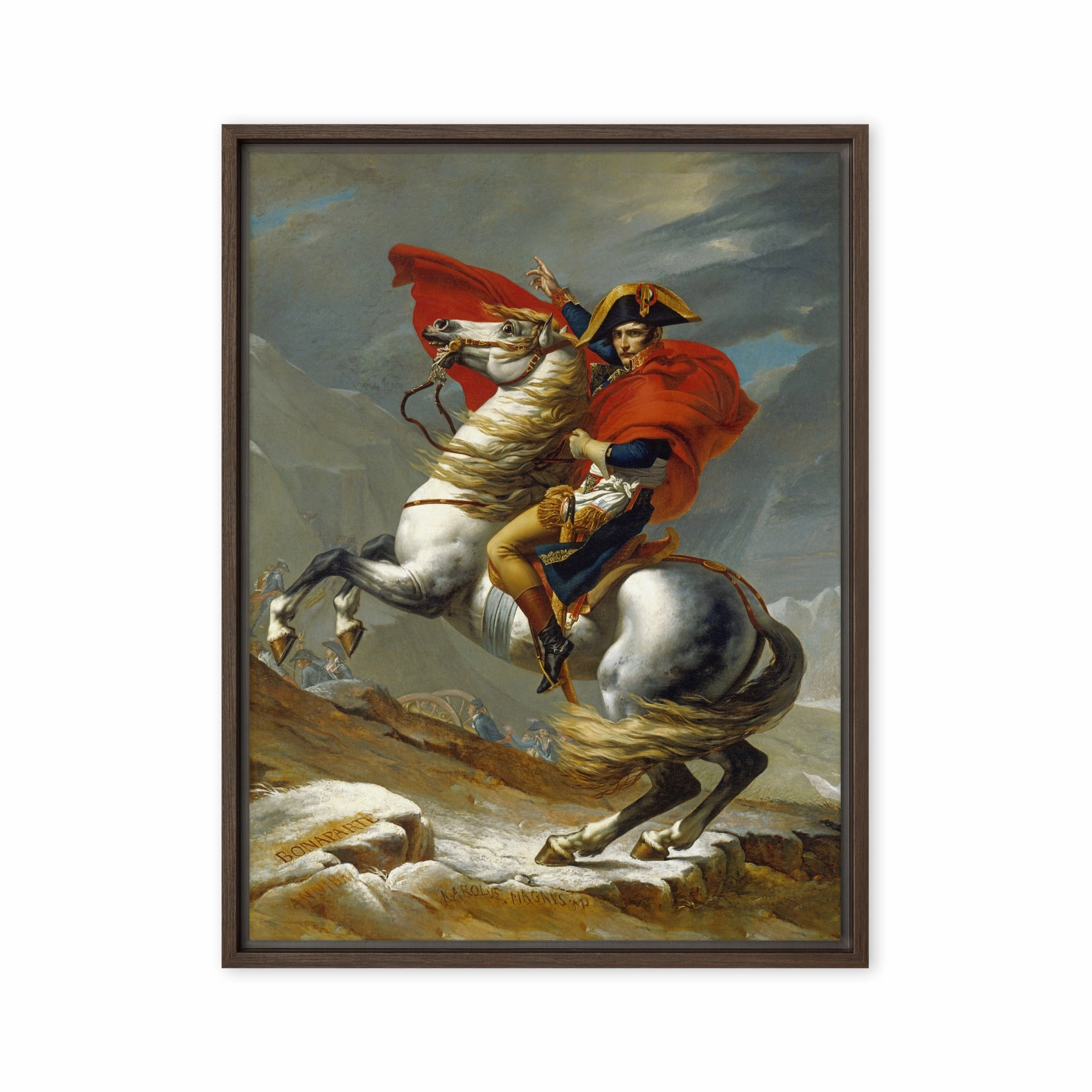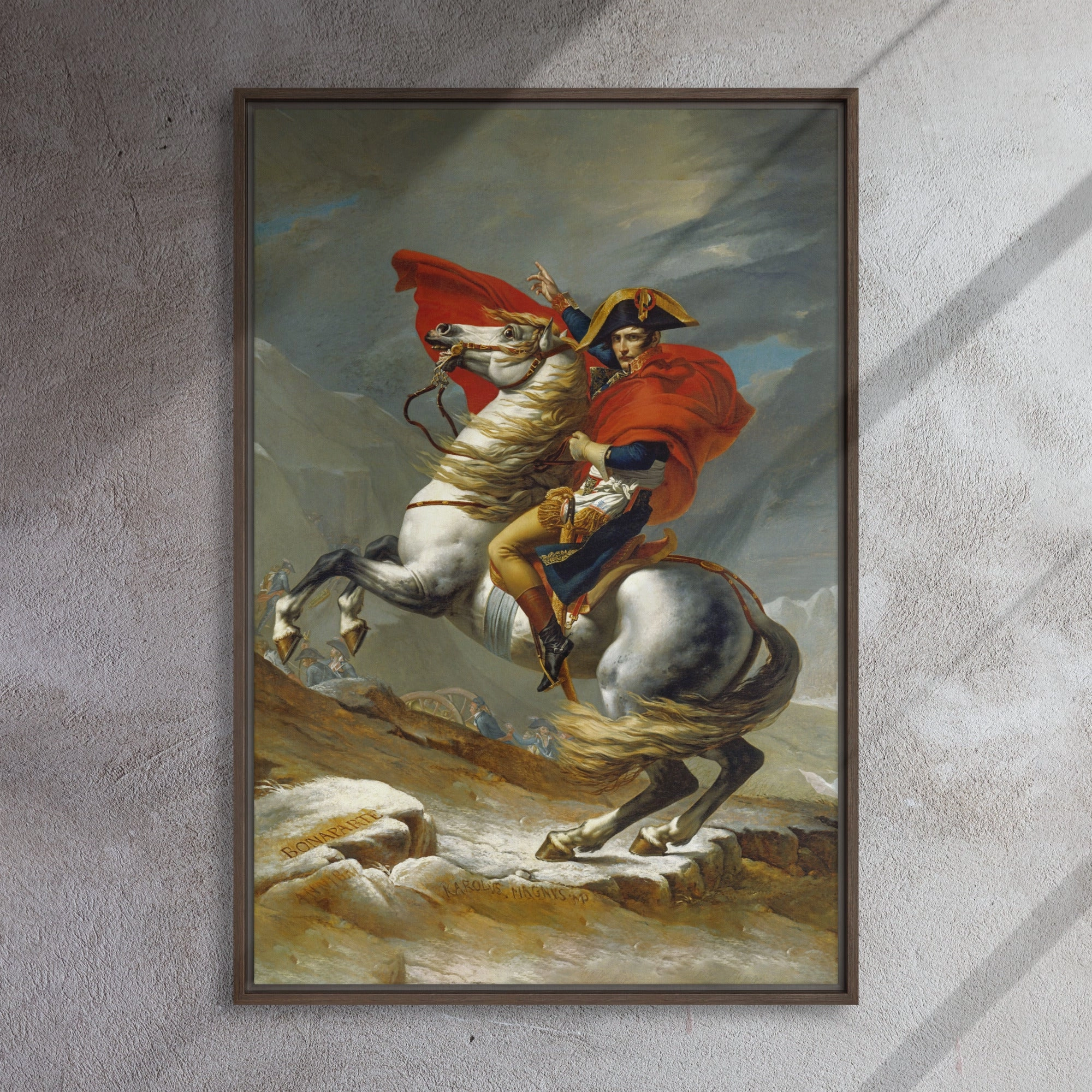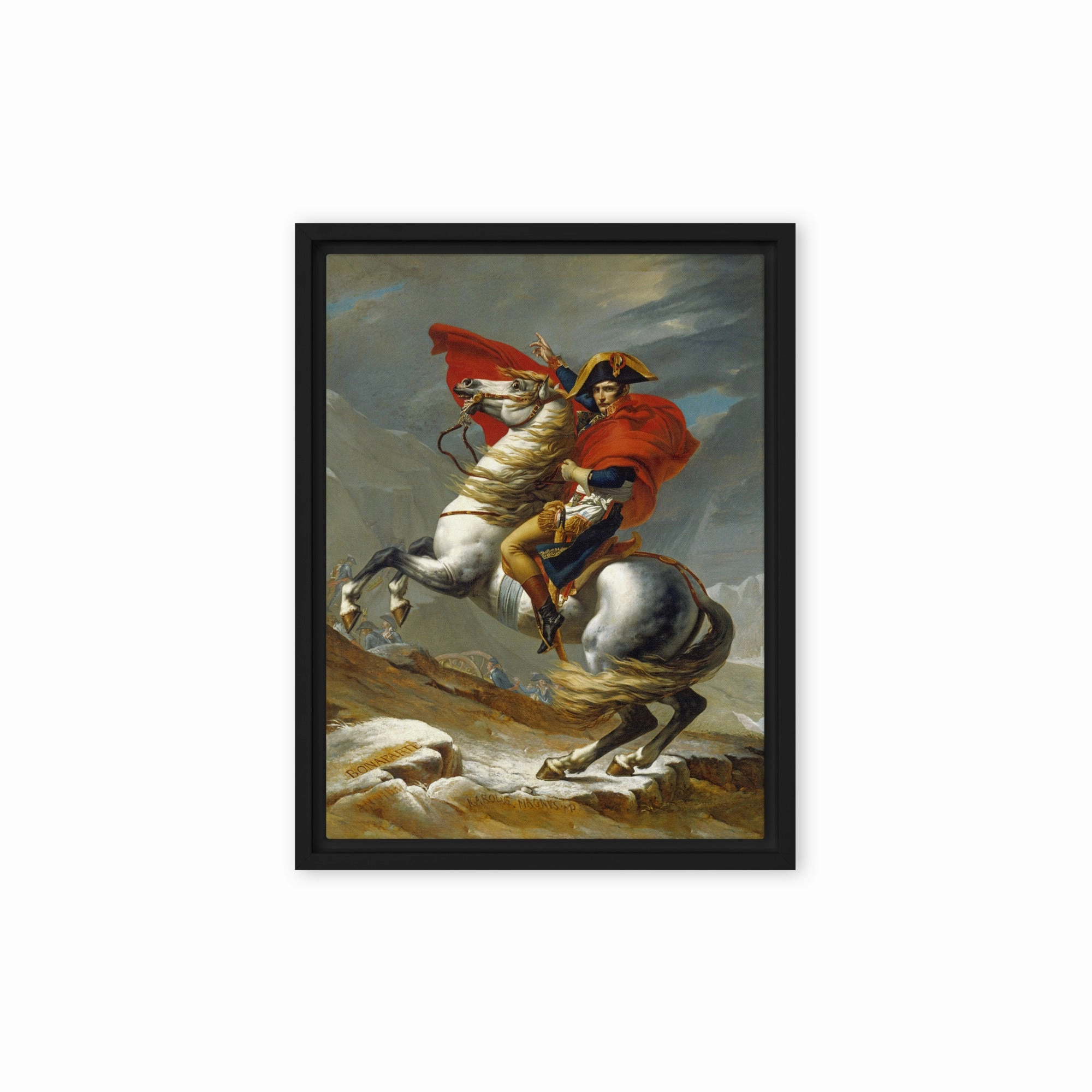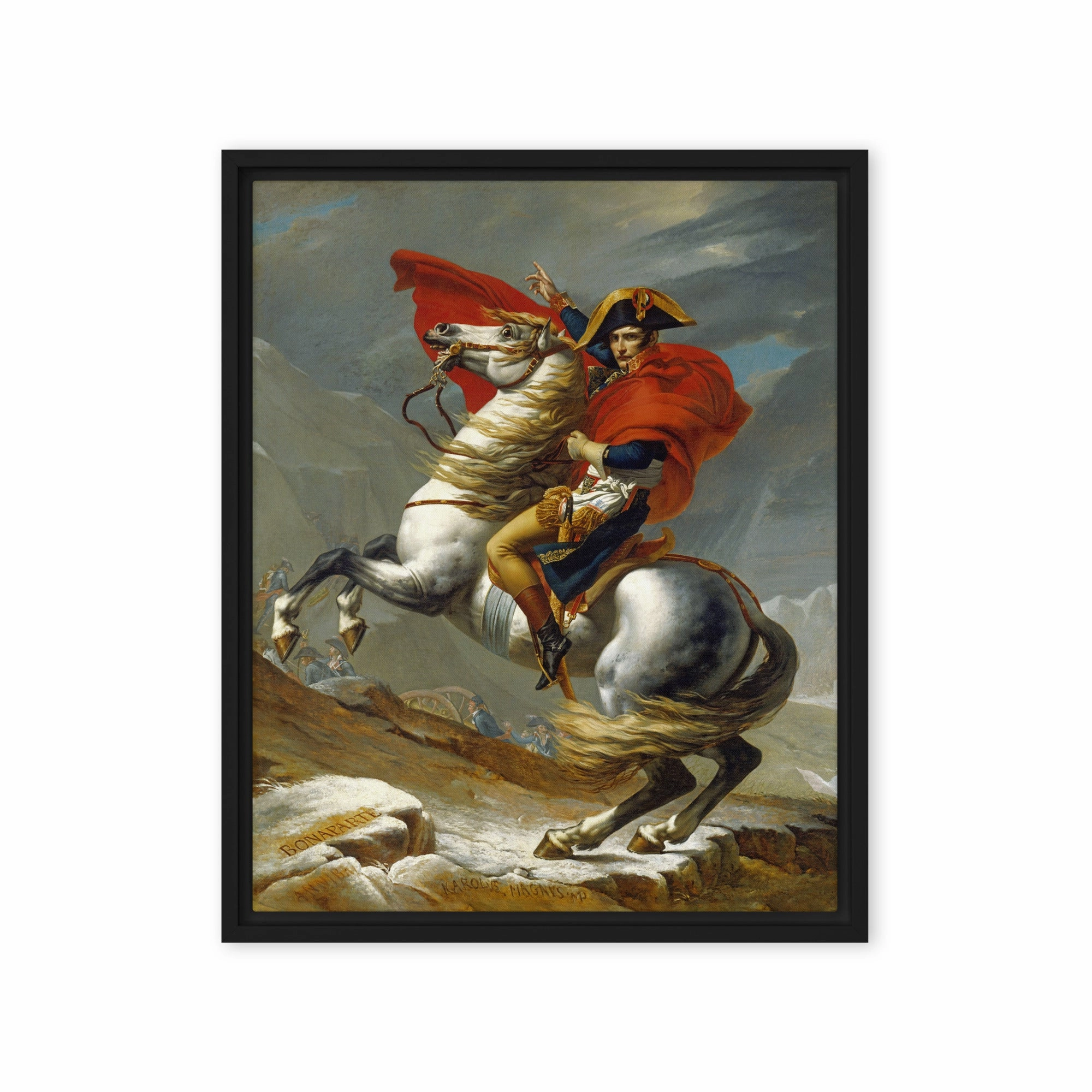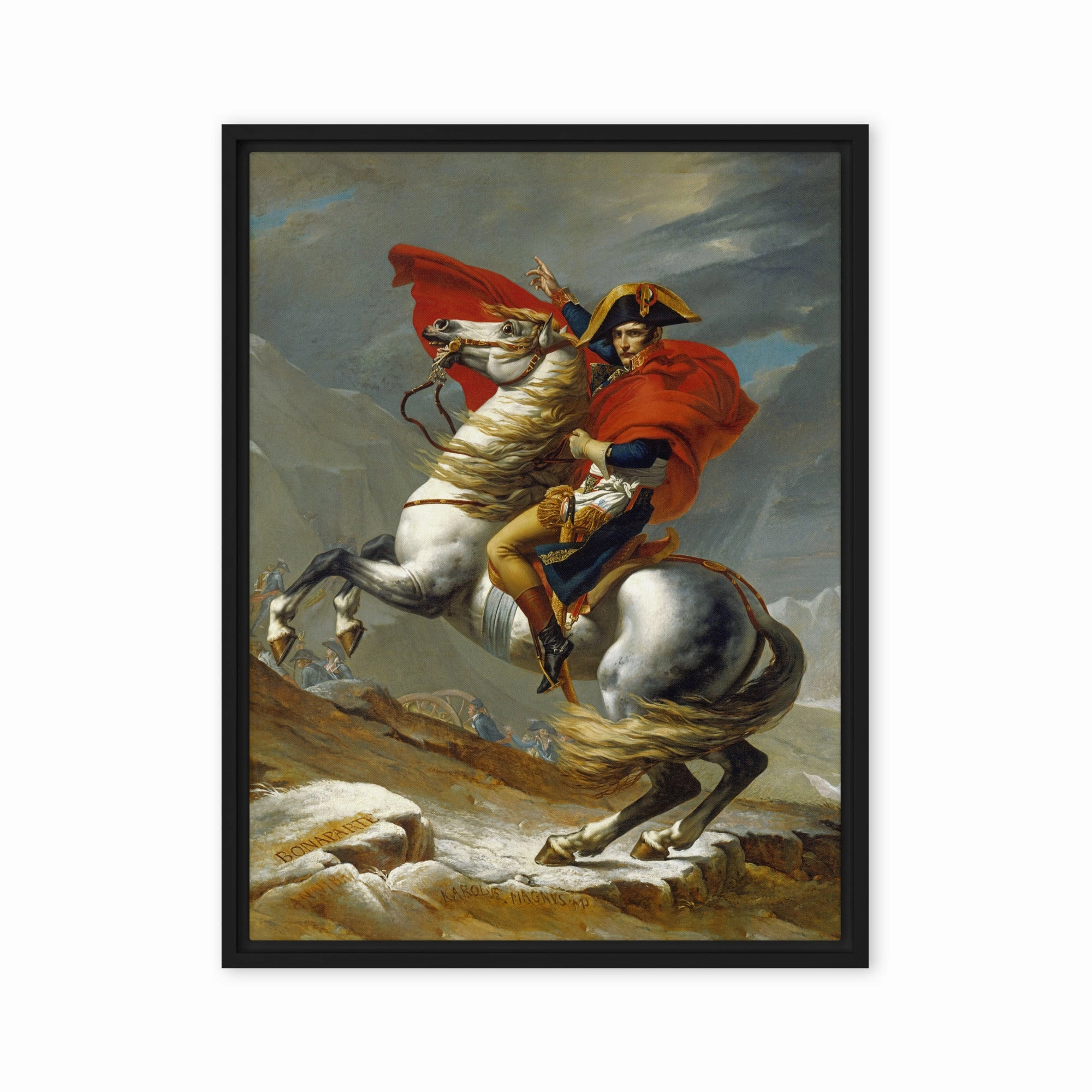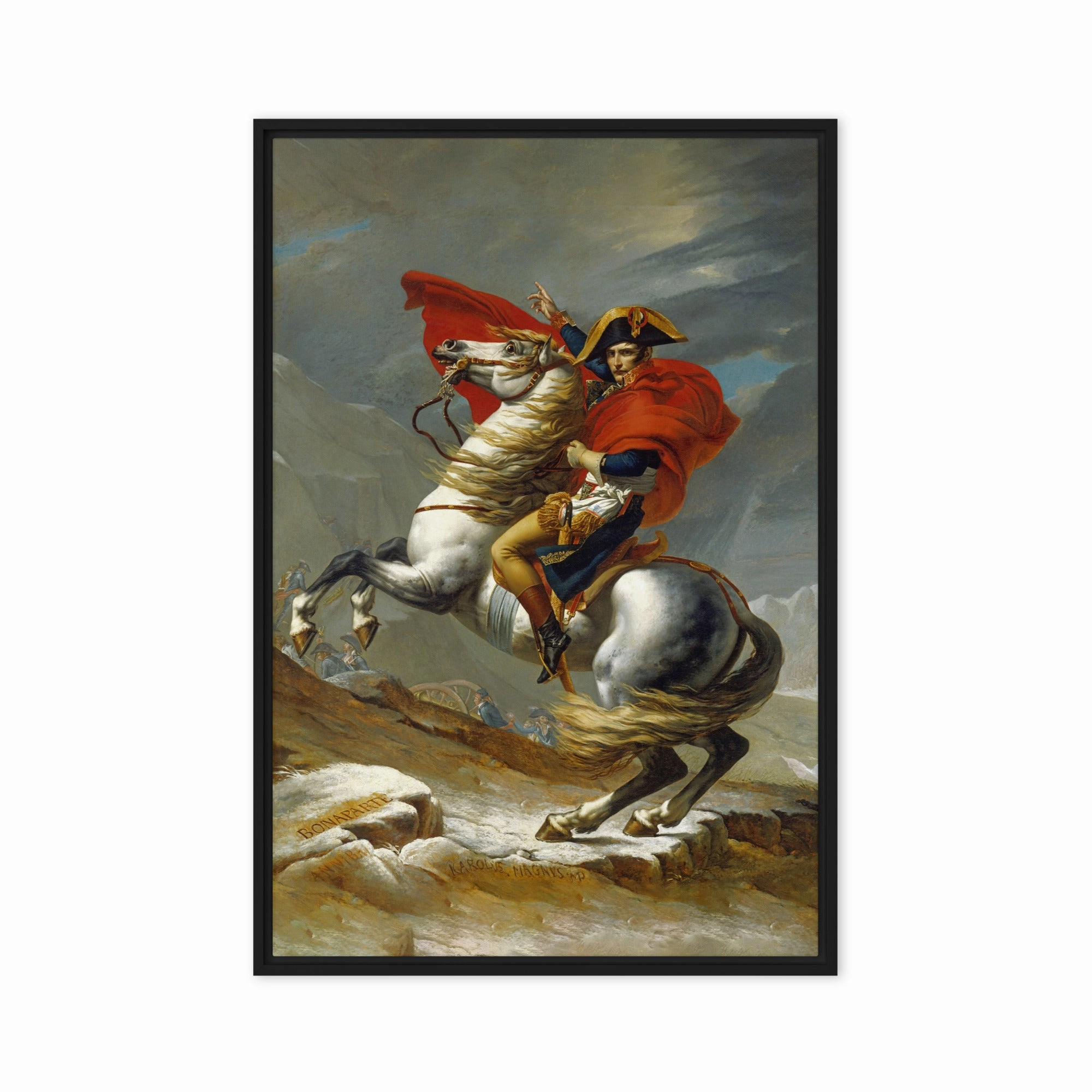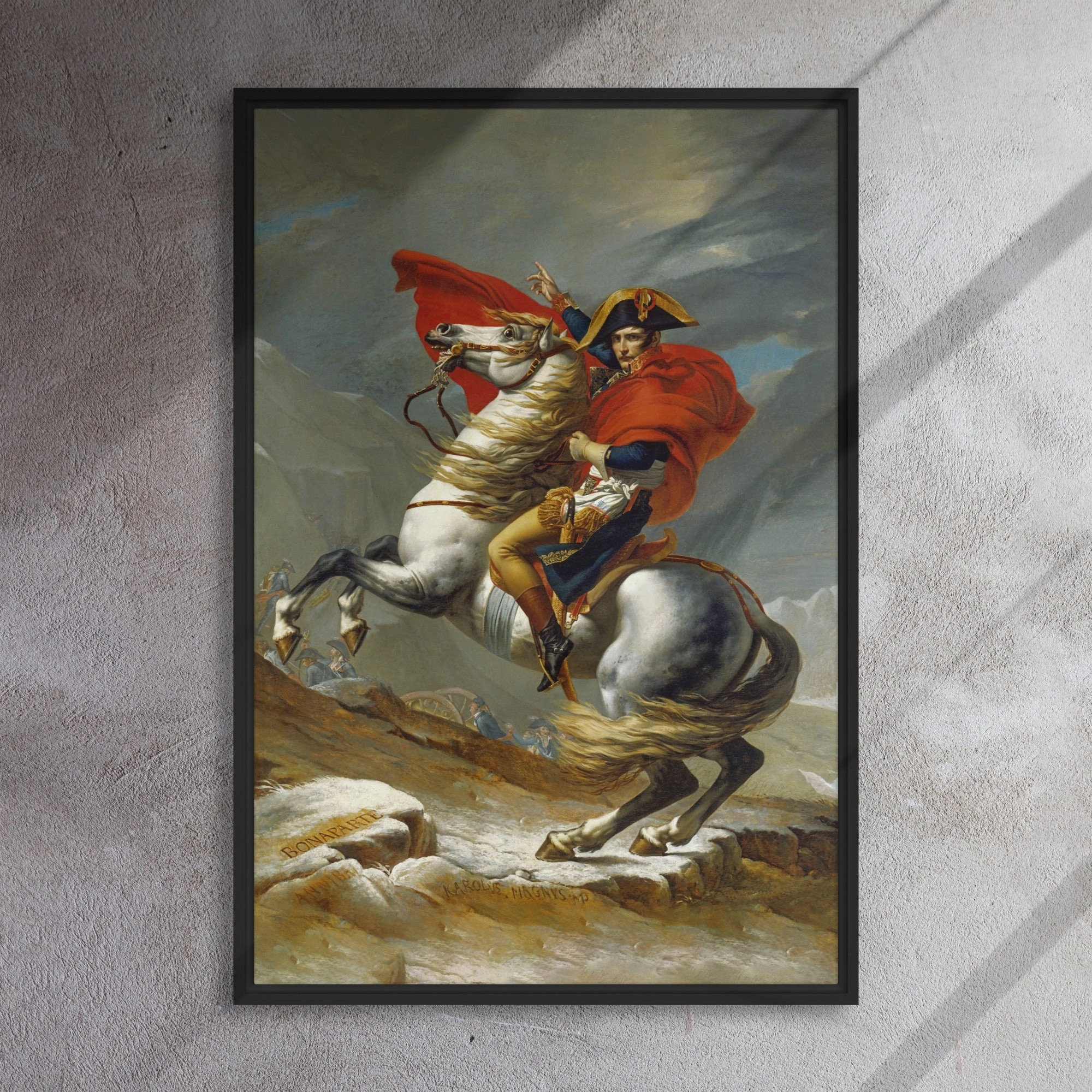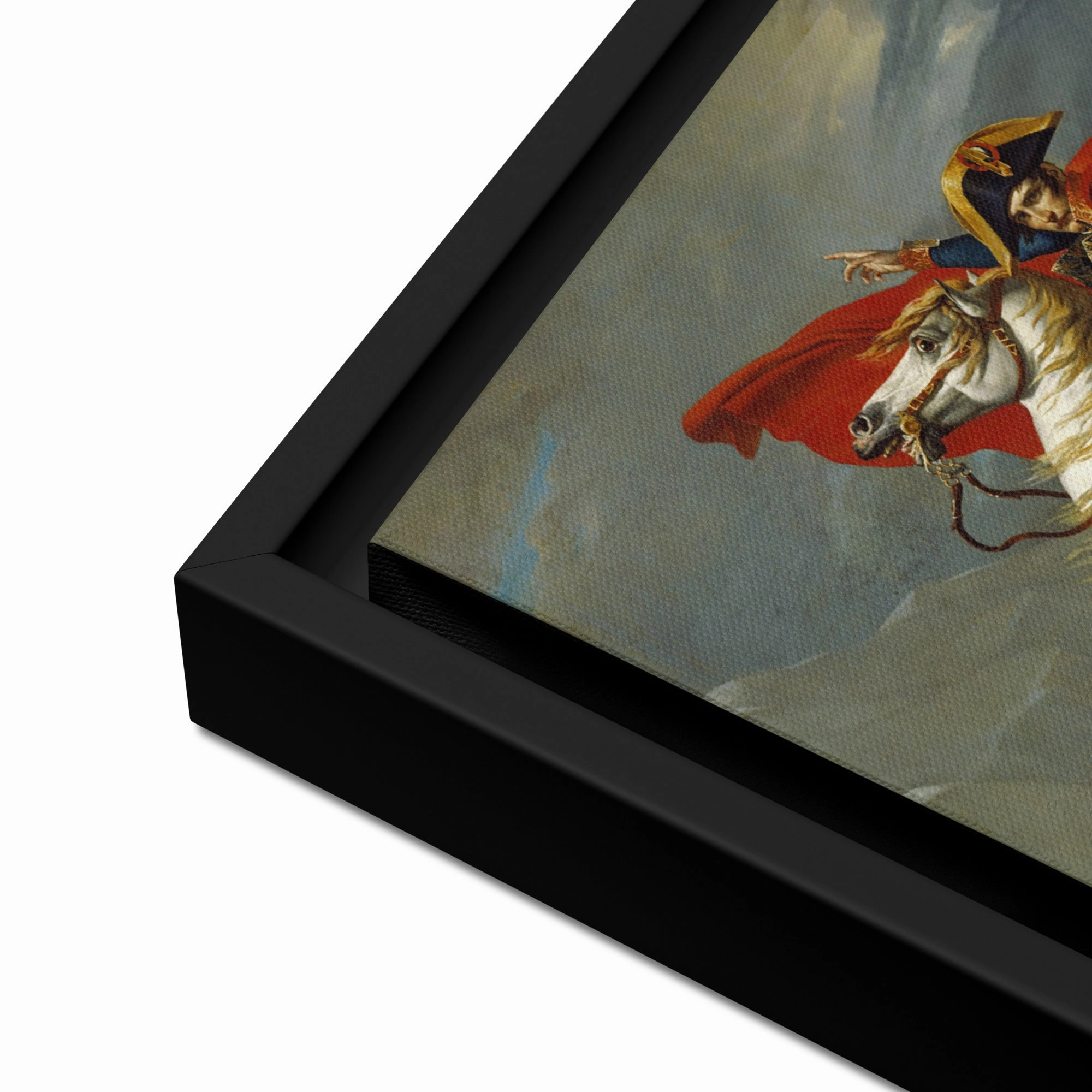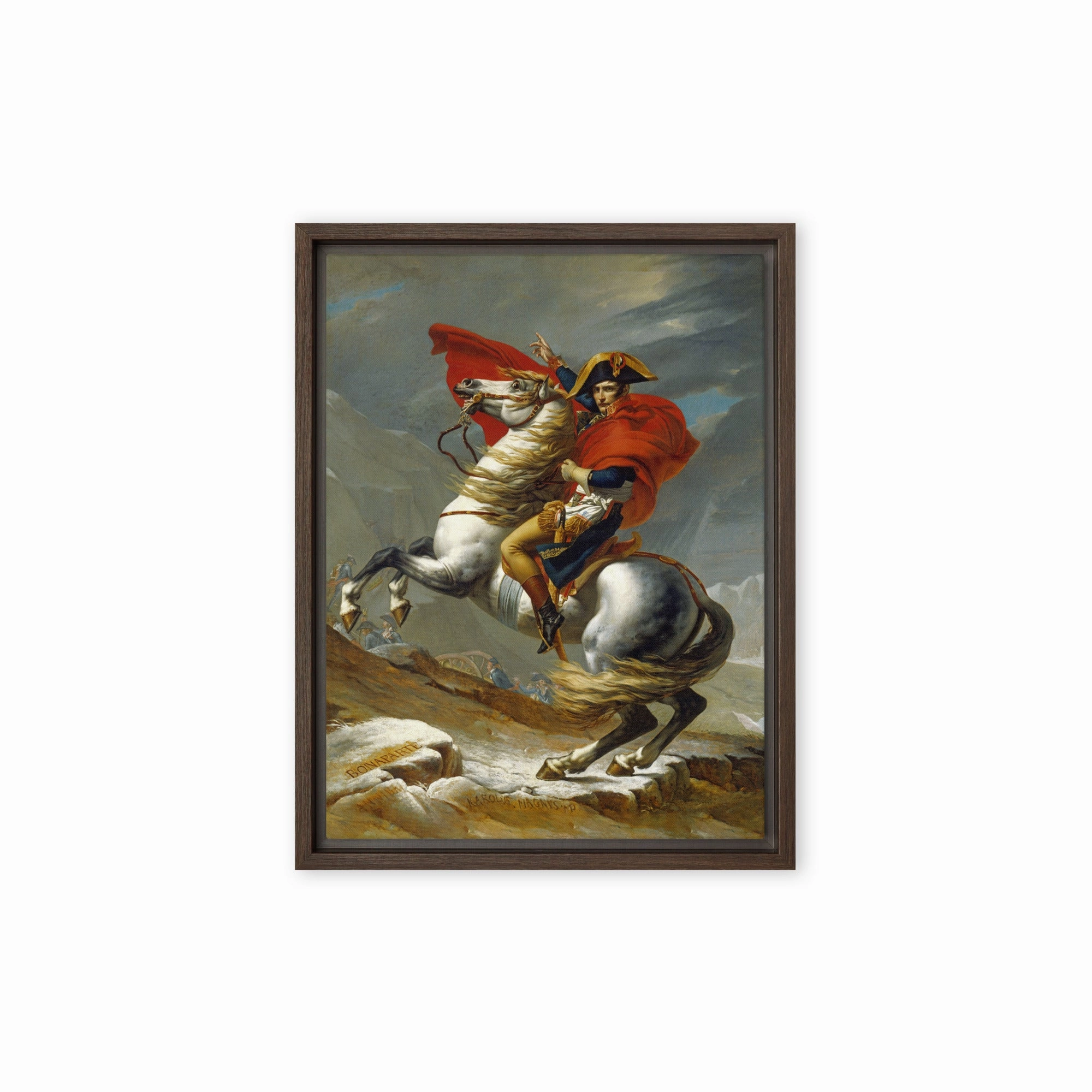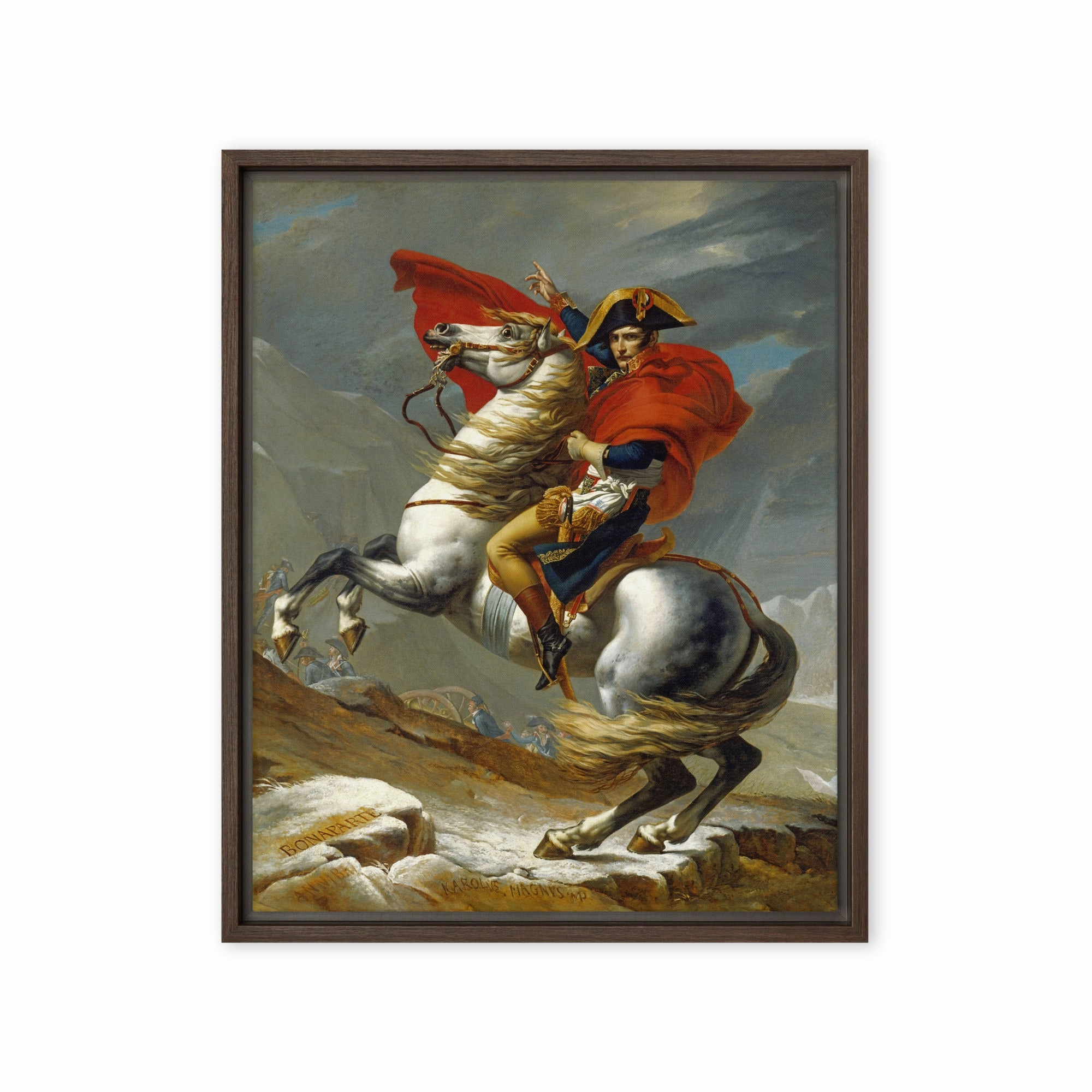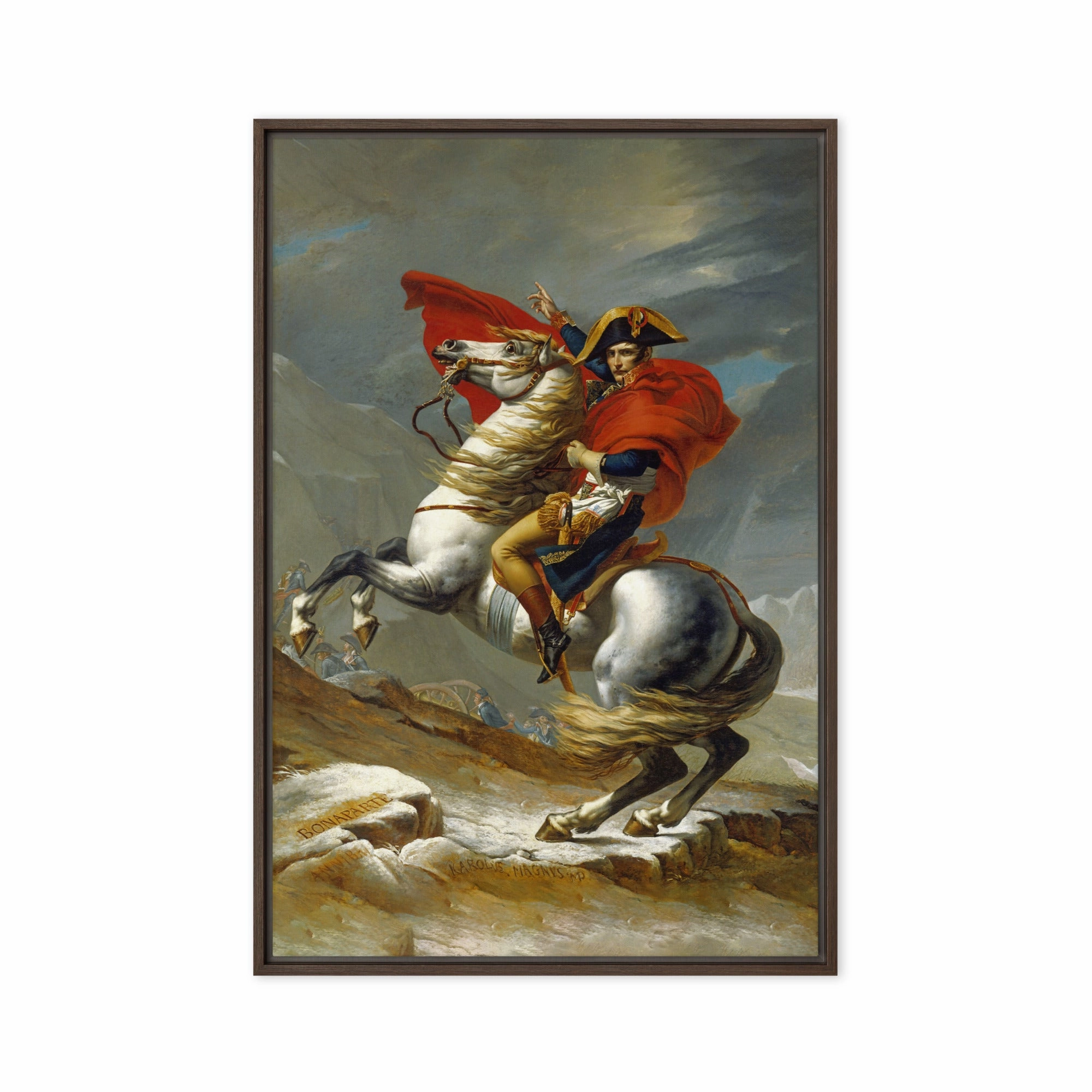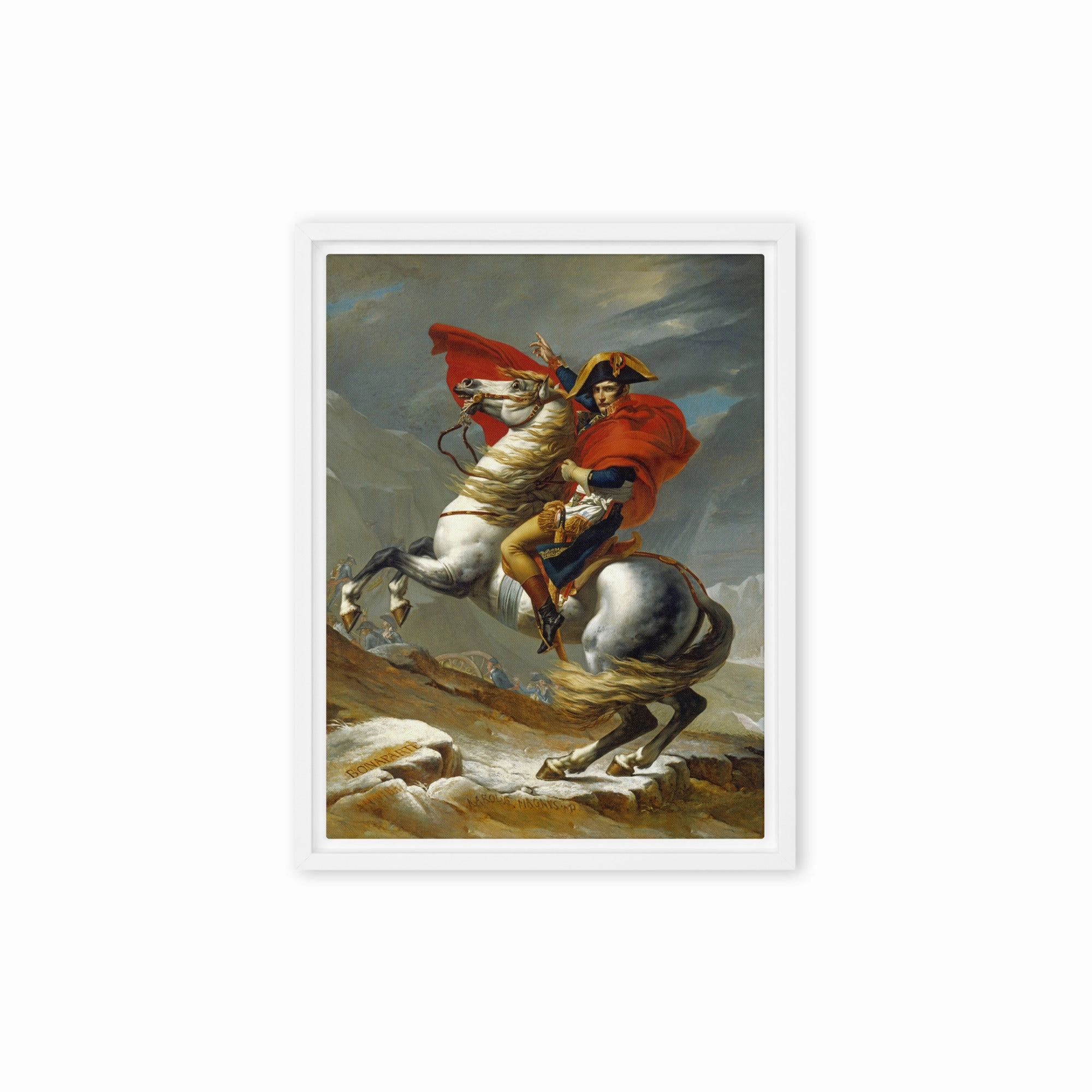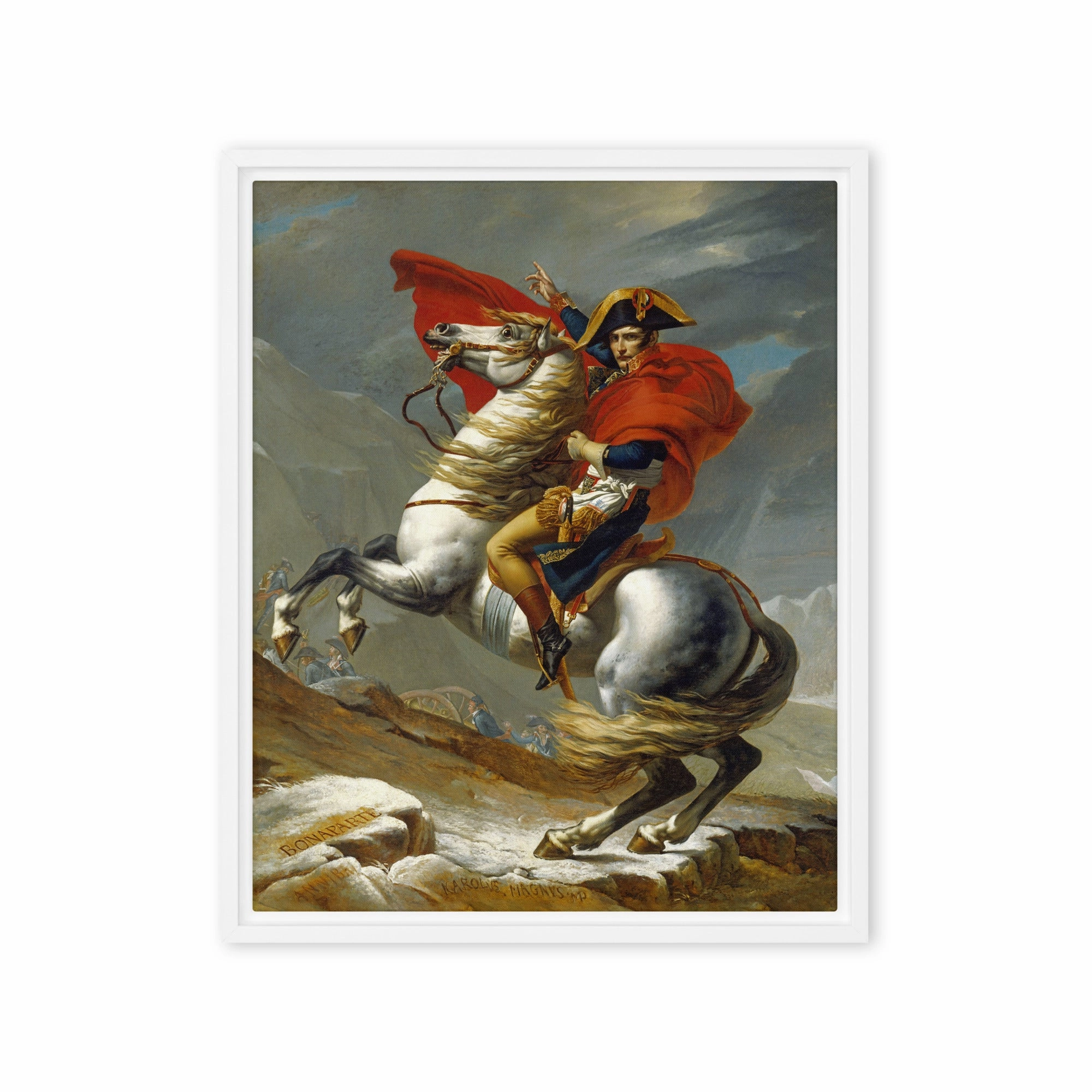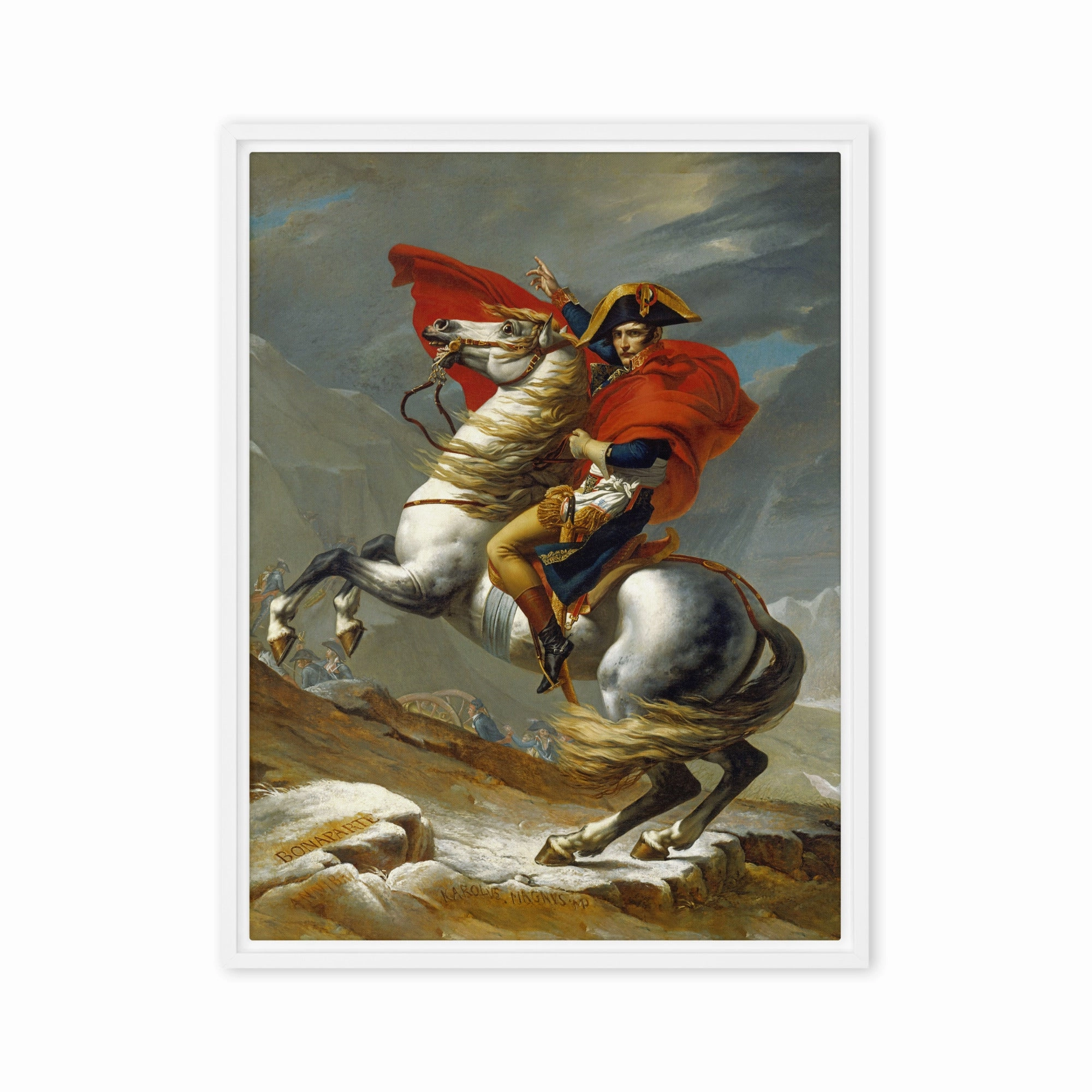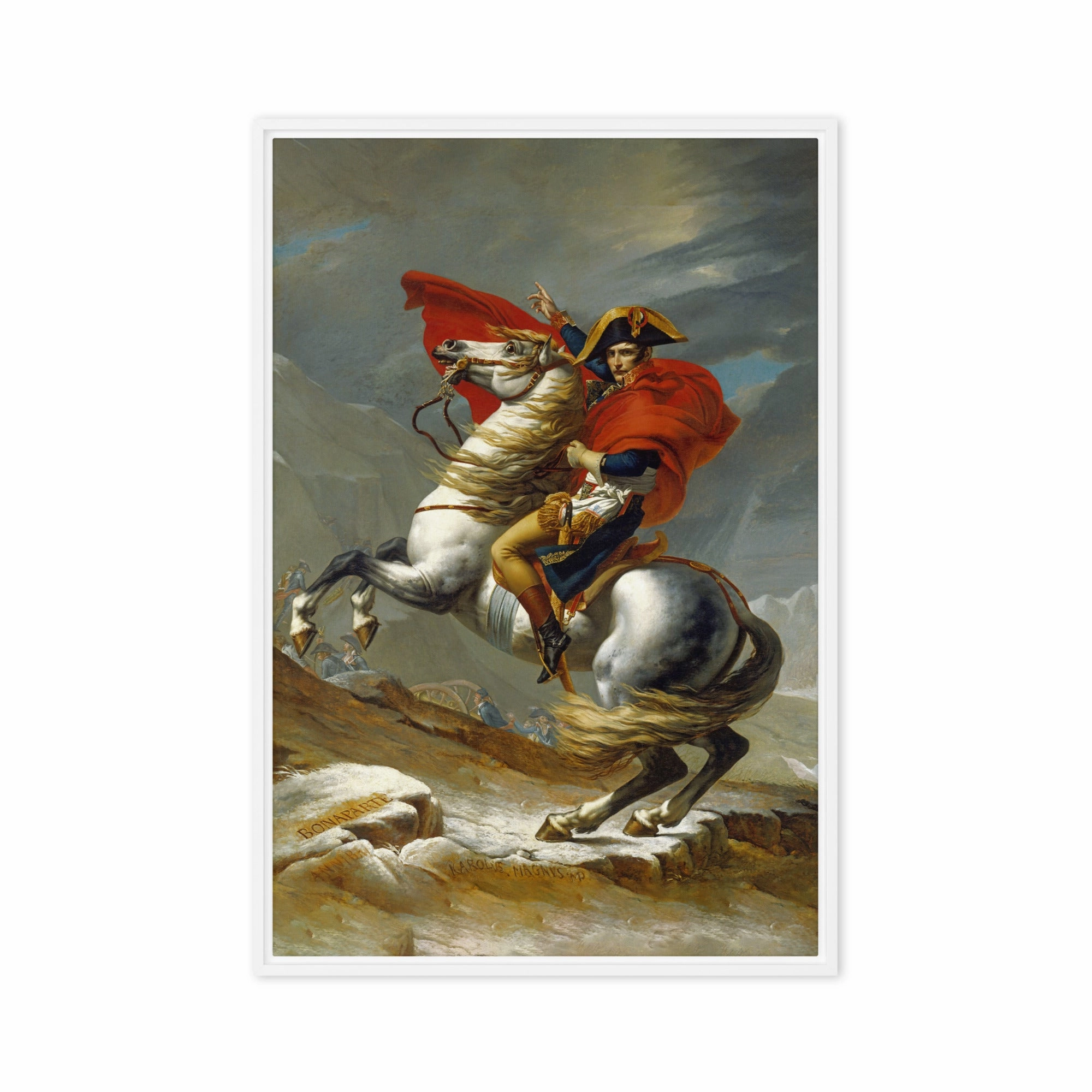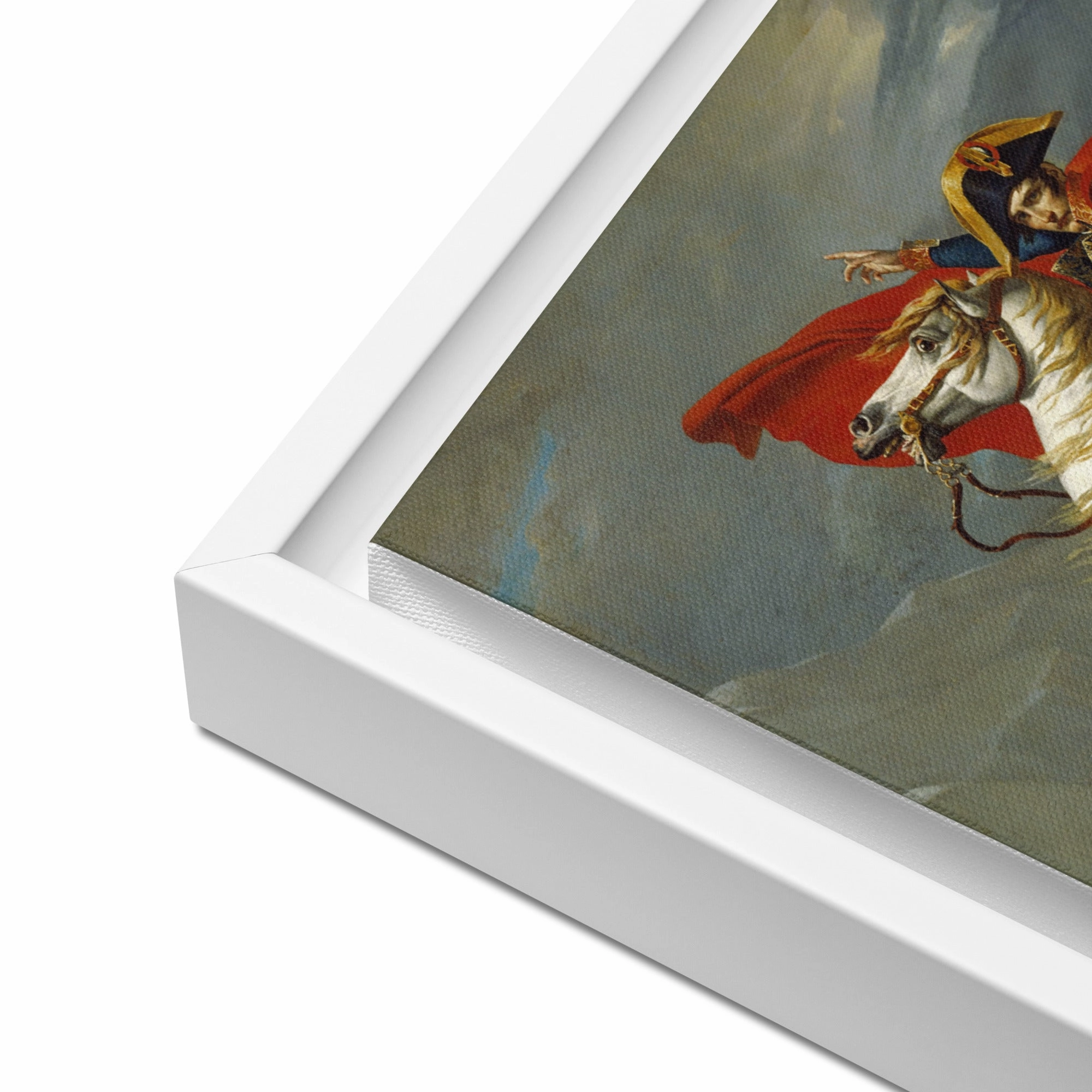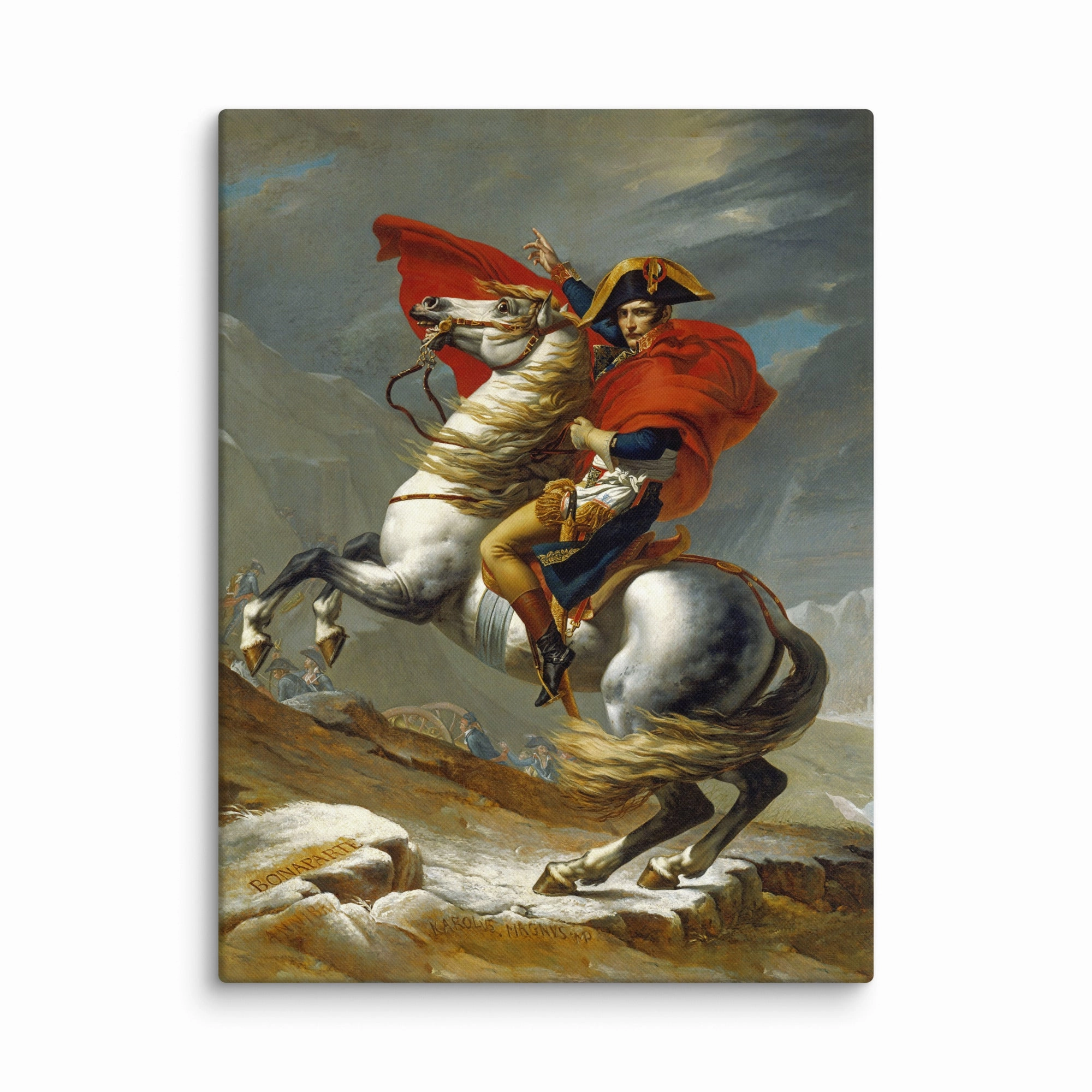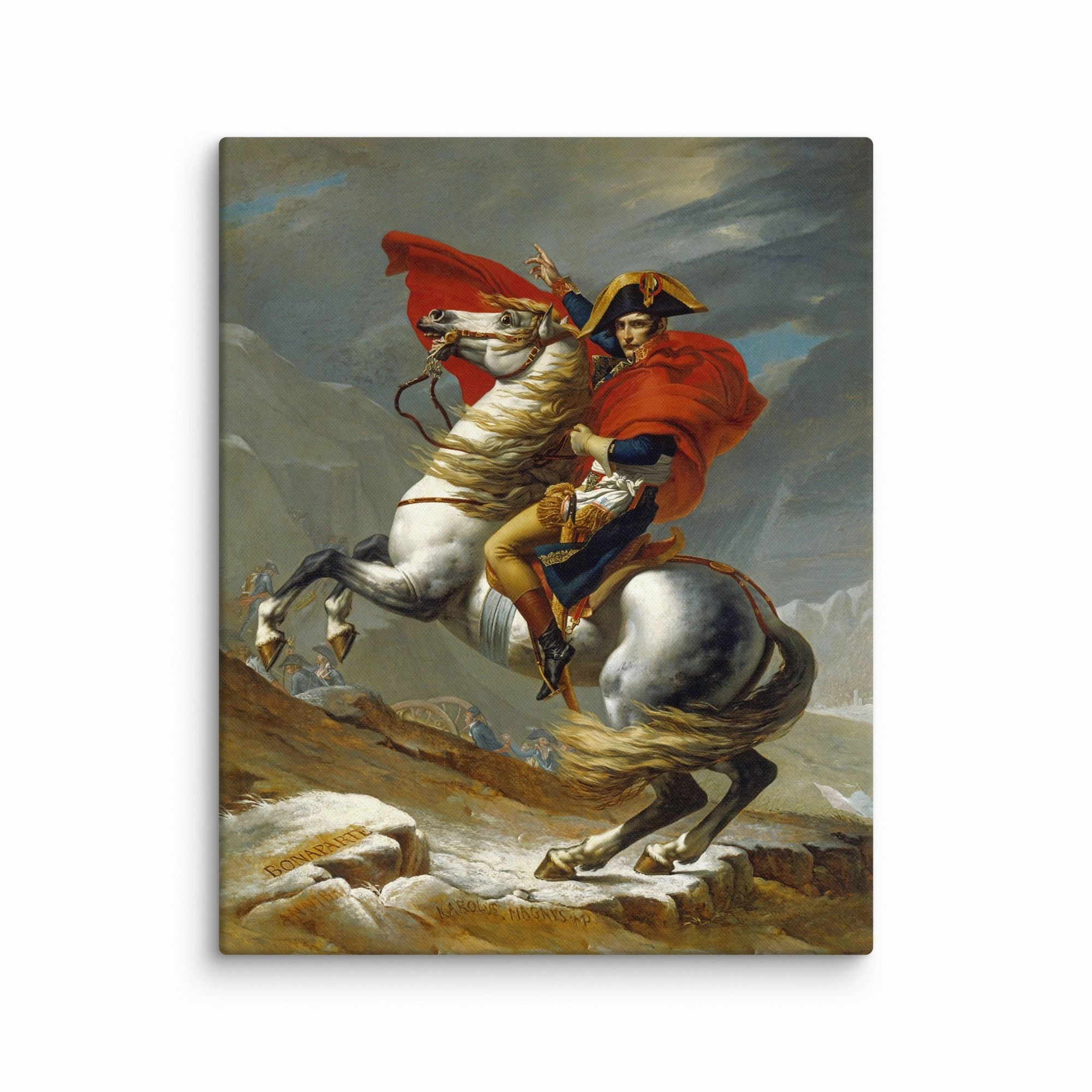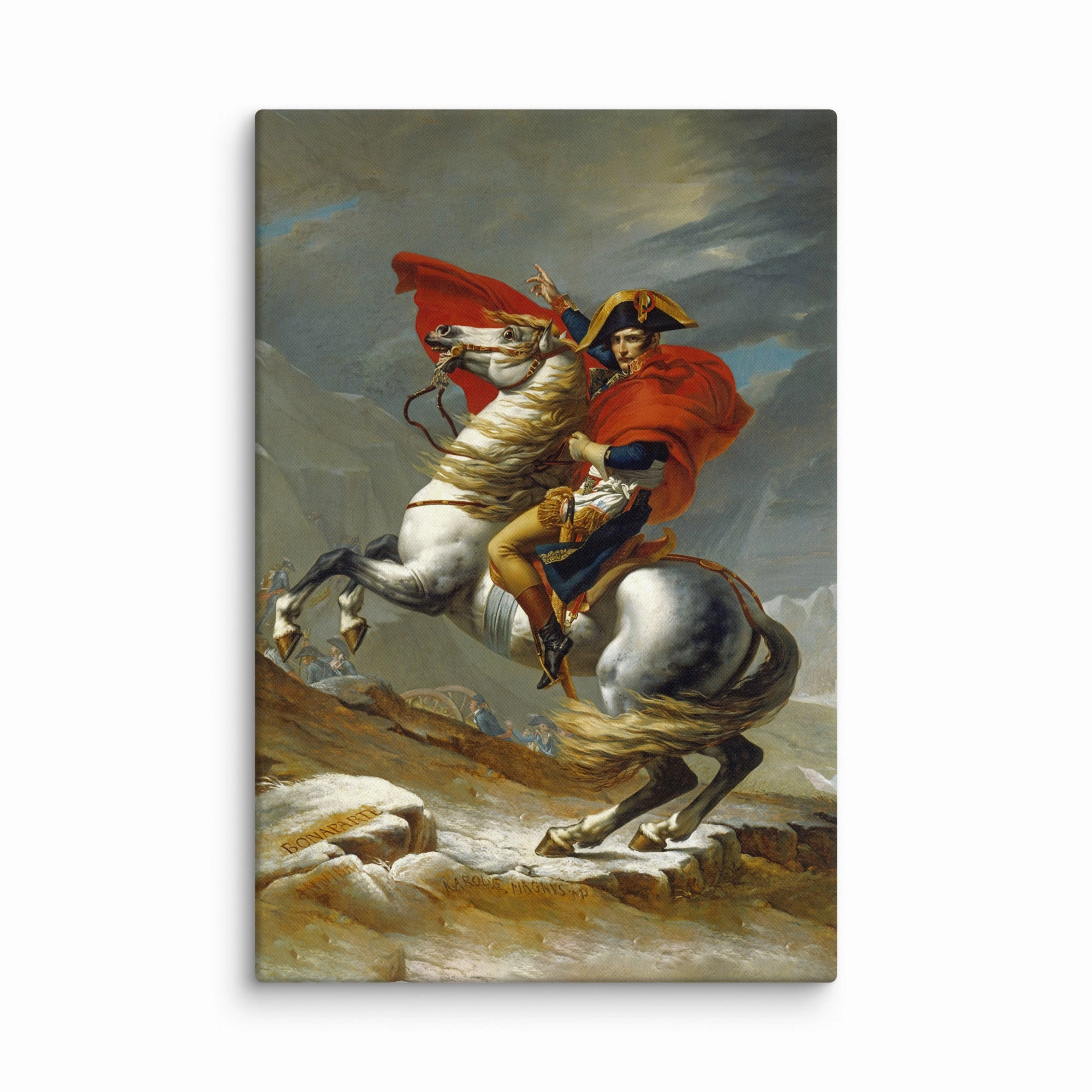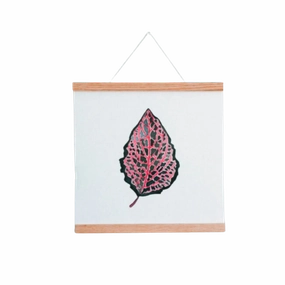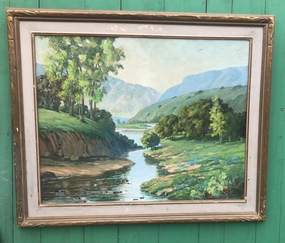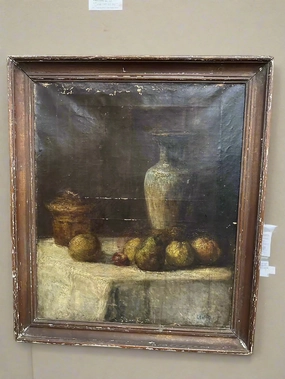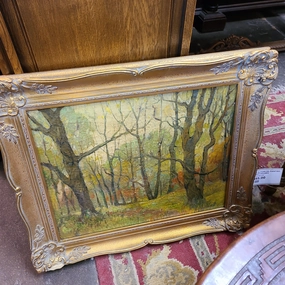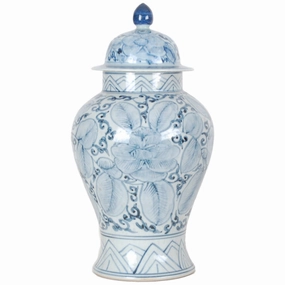Framed canvas - Napoleon Crossing the Alps
Spice up your empty walls with this eye-catching framed canvas! This high quality Napoleon Crossing the Alps framed pine canvas comes with rubber bumpers on the back corners and a wall mount for easy hanging of the artwork. In addition, the frame gives the canvas a cool floating effect!
Frame: Pine
Frame thickness: 3.18 cm (1.25)
Canvas fabric weight: 344 g/m /- 25g/m (10.15 /- 0.74 oz/yd)
Open back
With rubber buffers on the rear corners
Suspension attached
Disclaimers:
- The framed canvases with brown and black frames have a black interior around the canvas and the canvases with white frames have a white interior around the canvas.
- This product is not intended for sanding or cutting doing so creates airborne dust that can cause lung irritation.
Canvas without frame
Looking for some flair for your office or home? Your search is over! This canvas print - Napoleon Crossing the Alps with vibrant and fade-resistant colors is sure to catch the eye.
Acid-free, PH-neutral poly-cotton base
0.5mm thick poly-cotton fabric
Canvas fabric weight: 470gsm
Fade-resistant
Hand-stretched on a solid wood frame
Matte coating
3.81 cm deep
Includes mounting clips
The painting "Napoleon Crosses the Alps" is a famous work by the French painter Jacques-Louis David. Created between 1800 and 1801, it depicts French Emperor Napoleon Bonaparte during his famous Alpine campaign in May 1800. This campaign was a pivotal moment in Napoleon's military career, as he crossed the Alps to surprise and ultimately defeat the Austrians in Italy .
The painting depicts Napoleon riding an energetic white horse, standing with its front hoof raised amidst a dramatic mountain landscape. Napoleon himself is dressed in a regal-looking uniform and wears a striking red cape that blows in the wind. He looks resolutely ahead and points to the path that leads over the Alps. This pose and depiction emphasizes his leadership qualities and determination.
In the painting, Jacques-Louis David emphasizes the heroic portrayal of Napoleon by portraying him as a charismatic and powerful figure. The composition of the painting is highly symmetrical, with Napoleon depicted as the central focus. The dramatic lighting enhances the heroic effect and creates a strong sense of depth in the landscape. The mountains in the background are rugged and imposing, highlighting the dangers and challenges of crossing the Alps.
"Napoleon Crosses the Alps" was originally conceived as a propaganda work to emphasize Napoleon's strength and leadership. Jacques-Louis David, who was a supporter of the French Revolution, painted the painting to glorify Napoleon as a visionary leader and create the myth of his power. The heroic portrayal and dramatic staging were intended to convey the image of an invincible and determined leader.
The painting was so successful that Jacques-Louis David created several versions of it, with the most famous version now located at the Malmaison Castle in France. Other versions can be found at the Belvedere in Vienna, the Charlottenburg Palace in Berlin and the National Gallery of Art in Washington, D.C. This distribution shows how much the painting was perceived as a symbol of Napoleon's power.
The work had a significant influence on the depiction of Napoleon in art. It set a standard for heroic portrayals of political and military leaders. Jacques-Louis David's "Napoleon Crossing the Alps" is an iconic painting that not only depicts Napoleon's military leadership, but also showcases David's masterful technique and contribution to the development of French neoclassicism. The precise attention to detail, dramatic composition and powerful symbolism make the painting an outstanding example of the art of this era.

 Cart(
Cart(